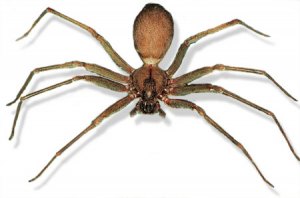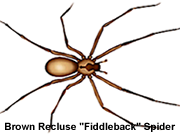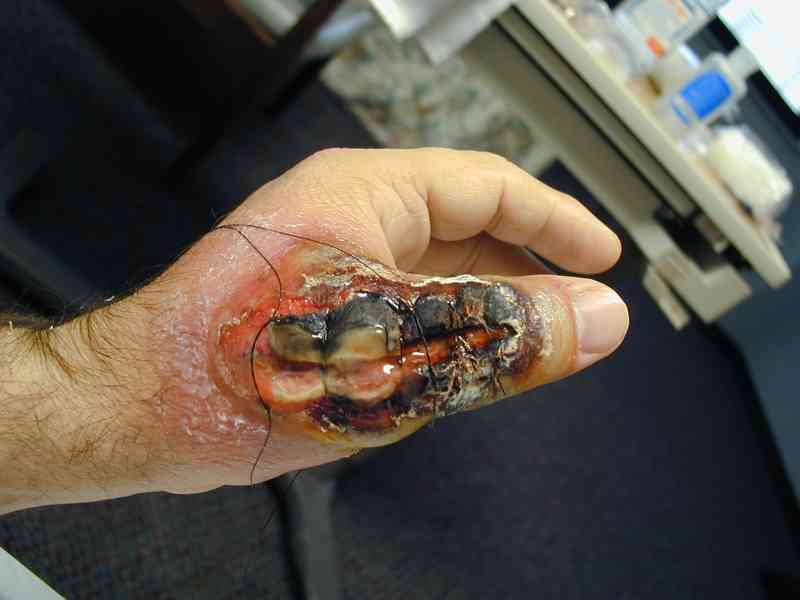

Brown Recluse Spider
location, identification, behavior, poison, bites treatment and first aid


location, identification, behavior, poison, bites treatment and first aid
Brown recluse spider bite is poisonous. The worst case scenario is that you can die because of its venom. It is even more dangerous than a rattlesnake's bite. The venom of this spider is toxic and can damage body cells and tissues. Although it can cause a lesser number of diseases compared to a rattlesnake bite, its venom is more potent.
When this spider bites you, it will cause a noticeable skin lesion or a local injury. The bitten person will also experience various symptoms of its poisonous venom. The symptoms vary, depending on the amount of poison that is incurred by a bitten person and the sensitivity of that individual.
At first, the bite seems to be painless. Most people who are bitten by this type of spider swear that they feel nothing at all and are often unaware of the bite. But as soon as the bite becomes evident, in just a few hours, one can experience a variety of symptoms related to the poisonous bite.

Recluse Loxosceles, a North American brown recluse spider and the Laeta Loxesceles, a South American brown recluse spider are the most fatal. Their venom contains enzymes that have great similarities to the poison found in snakes. These enzymes include protease, hyaluronidase, phosphohydrolase, phospholipase, alkaline phosphatase, and esterase.
The poison may different from one recluse spider to another - it basically depends on their species. The fatality of the venom and symptoms of an individual also depends on how much of the poison has entered the body of the victim. Clinic cases of these bites are not major cases but there are also reports of coagulopatias and dermatonecrosis. Death is a rare result of the bite although this can happen to children victims. Some children who did not face death can possibly lost facial parts and may need plastic surgeries because of the serious damages the bite made on the victim's skin.